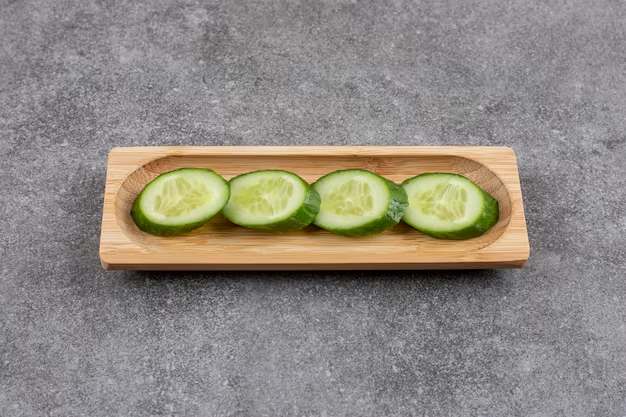The Ultimate Guide to Storing Cucumbers in Your Refrigerator: How Long Do They Stay Fresh?
Cucumbers are a staple in many kitchens, prized for their crisp texture and refreshing taste. Whether you’re tossing them into a salad, blending them into a smoothie, or munching on them as a healthy snack, the question arises: How long do cucumbers stay fresh in the refrigerator? Understanding their shelf life and storage conditions is essential for minimizing waste and getting the most out of this versatile veggie. Let's delve into several aspects of cucumber storage, offering practical tips to keep your cucumbers crisp and delicious for as long as possible.
🥒 Understanding Cucumber Shelf Life in the Fridge
Factors Impacting Cucumber Longevity
When it comes to cucumbers, their shelf life can be influenced by a host of factors:
- Freshness at Purchase: Cucumbers picked recently and stored properly can last longer than those that have been sitting out for a while.
- Storage Conditions: Proper refrigeration is key. Storing cucumbers at the right temperature and humidity can extend their lifespan.
- Cucumber Variety: Some cucumbers, such as English or Persian varieties, have different storage lifespans. Generally, thicker-skinned varieties tend to last longer.
Typical Refrigerator Shelf Life
Under optimal refrigerator conditions, cucumbers can remain fresh for approximately 7 to 10 days. However, it's crucial to monitor their condition regularly as certain types and purchase conditions might shorten or extend this window.
Signs of Spoilage
Keep an eye out for the following indicators to determine if your cucumbers are no longer good to eat:
- Soft Spots or Sogginess: A tell-tale sign of deterioration.
- Yellowing Skin: Indicates over-ripeness or spoilage.
- Sliminess: Especially near the stem area is a clear sign to discard them.
🧊 Best Practices for Storing Cucumbers in the Refrigerator
Optimal Storage Temperature and Humidity
To maximize the shelf life of cucumbers in the fridge:
- Temperature: Aim to store cucumbers at around 50°F (10°C). While typical fridge temperatures are about 37°F (2.8°C), storing them in the vegetable crisper can offer slightly warmer conditions, slowing down the cold damage.
- Humidity: Use the high humidity setting in your crisper drawer to keep cucumbers from drying out.
Packaging and Placement
- Avoiding Moisture: Cucumbers are sensitive to moisture, so store them away from too much humidity. Wrapping them loosely in a paper towel can help wick away excess moisture.
- Avoid Sealing: Store cucumbers in a breathable plastic bag or container to allow airflow. This helps prevent the build-up of ethylene gas, which can hasten ripening.
Interactions with Other Produce
Cucumbers are sensitive to ethylene, a compound emitted by some fruits and vegetables:
- Keep Separate from Ethylene-Producing Produce: Store cucumbers away from bananas, apples, and tomatoes, as these can speed up spoilage.
🌿 Enhancing Cucumber Longevity: Additional Tips and Tricks
Pre-Washing Considerations
While it's tempting to wash cucumbers immediately after bringing them home, it's smarter to wait until you're ready to use them. Washing can introduce moisture, leading to quicker spoilage.
Use of Commercial Solutions
For those who frequently deal with fruit and veggie spoilage, commercial freshness solutions or preservation sheets might be worthwhile. These are designed to absorb ethylene and extend the life of produce.
Preservation Techniques
If you anticipate keeping cucumbers longer, consider:
- Pickling: Transform fresh cucumbers into pickles to extend their shelf life significantly.
- Freezing: While cucumbers have a high water content and might lose their crunch when thawed, consider freezing them for smoothies or cooking purposes.
📝 Quick-Reference Summary: Keeping Cucumbers Fresh
Practical Tips for Cucumber Storage
- 🕒 Check Freshness at Purchase: Fresher cucumbers last longer.
- 🧴 Avoid Moisture: Store with a paper towel to absorb excess water.
- 📦 Use Breathable Packaging: Allow air circulation to diminish ethylene build-up.
- 🔻 Separate from Ethylene Fruits: Keep away from bananas, apples, and tomatoes.
- ❄️ Optimal Temperature: Ideal fridge setting is around 50°F (10°C).
- ✨ Consider Preservation: Pickle or freeze for extended storage.
Why Proper Storage Matters in Reducing Food Waste
Environmental Impact
Every year, millions of tons of food are wasted globally, contributing to environmental pollution and unnecessary resource expenditure. Proper storage not only keeps your produce fresher for longer but also contributes to less food waste and a more sustainable lifestyle.
Economic Benefits
By extending the shelf life of your cucumbers, you save money by reducing the need to replace spoiled produce. This simple act of careful storage translates to buying only what you need and using it wisely.
In conclusion, understanding and implementing the best practices for cucumber storage can significantly improve their shelf life in your refrigerator. By monitoring the freshness, optimizing storage conditions, and using preservation techniques, you can enjoy crisp and fresh cucumbers while contributing to a more sustainable world. Keep these tips in mind, and say goodbye to premature cucumber spoilage!
